Beautiful Birds That Are Endemic To The Philippines
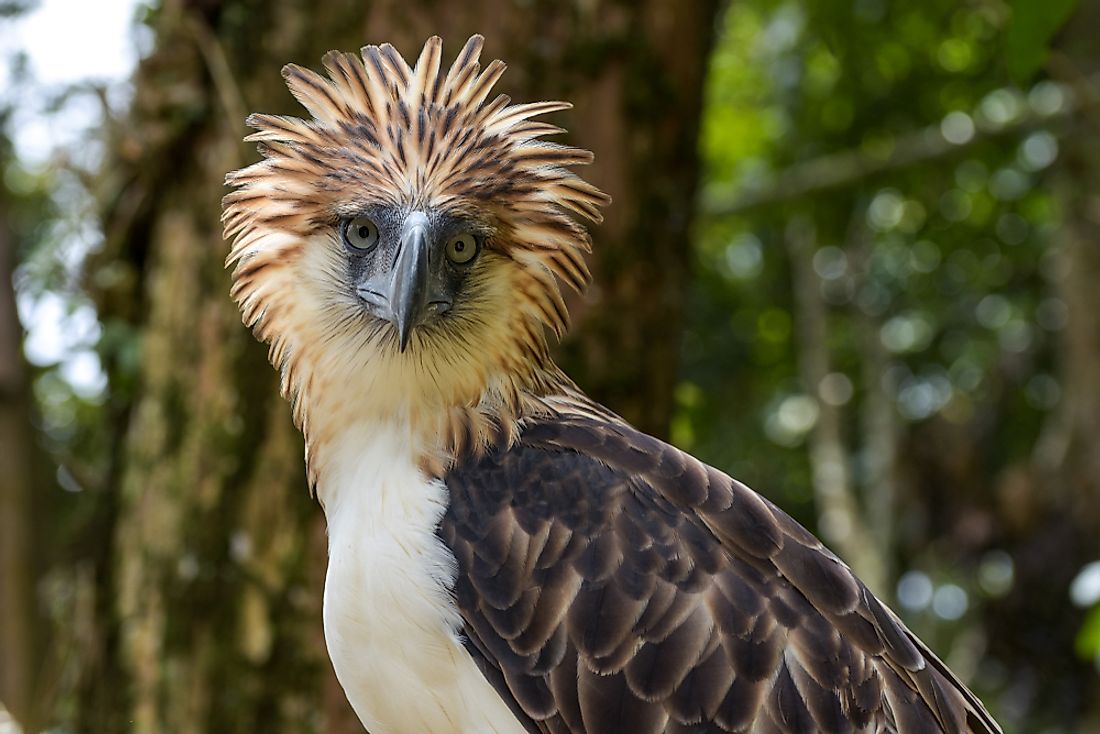
With a cluster of over 7,000 volcanic islands in the Pacific Ocean, the Philippines is a country famous for its spectacular landscapes and incredible biodiversity. The country’s marine and terrestrial habitats are home to many unique species that are found nowhere else in the world. Of the 580 recorded birds in the Philippines, over 35% are endemic. Many of these birds are also threatened with extinction. Some of the endemic birds of the Philippines have been mentioned below.
Palawan Peacock-pheasant
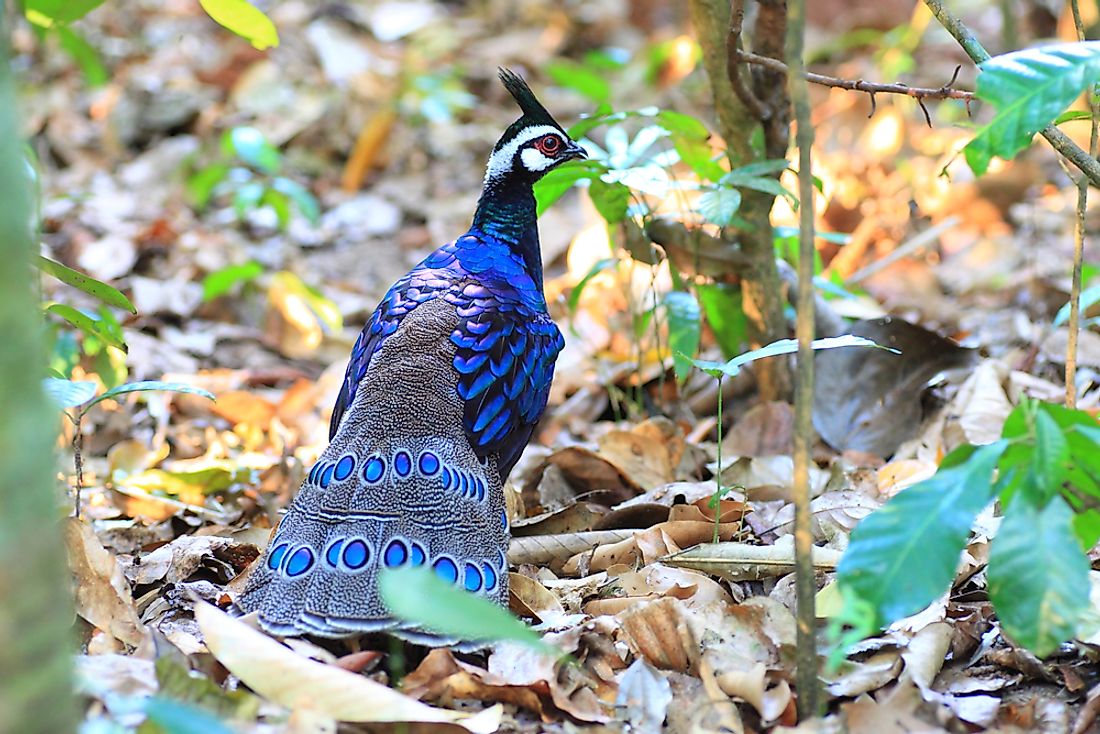
The Polyplectron napoleonis is a beautiful bird that prominently features in the culture of the Philippines’ indigenous peoples of Palawan. It is a medium-sized bird of the Phasianidae family. The adult males have a striking peacock-like appearance with an erectile crest and a vibrant iridescent plumage. The females of the species are slightly smaller than males and like peahens, they have a duller color. These birds are endemic to the humid forests of Palawan Island in the southern part of the archipelago. They are insectivorous birds that feed on termites, centipedes, mollusks, frogs, seeds, berries, etc. Sadly, the Palawan Peacock-pheasant is hunted for its feathers or captured for the pet trade. It is also suffering from habitat loss and has been labeled as a Vulnerable species by the IUCN.
Philippine Duck
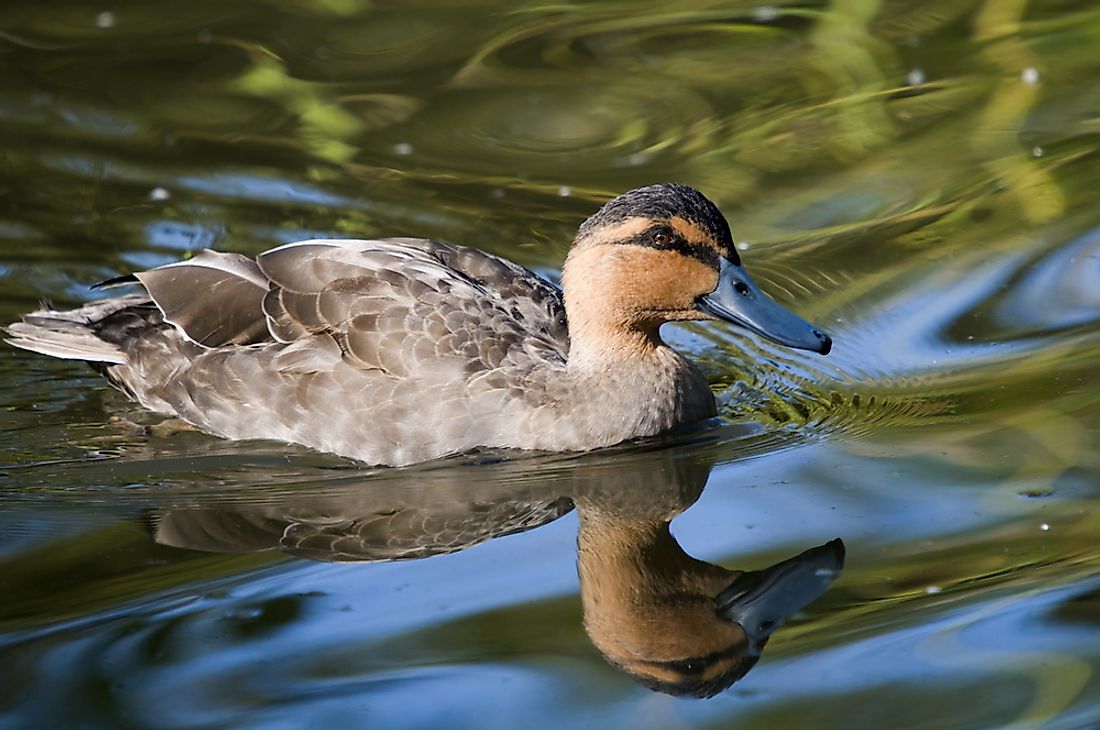
Anas luzonica is another Vulnerable species found only in the Philippines. It is a large dabbling duck belonging to the Anas genus. This bird has a cinnamon head and neck, greyish brown body, blue-gray bill, and a bright green speculum. Fish, insects, and vegetation constitute the diet of this bird. Only around 5,000 individuals of this species remain as habitat loss and hunting have triggered a drastic decline in its population.
Walden's Hornbill
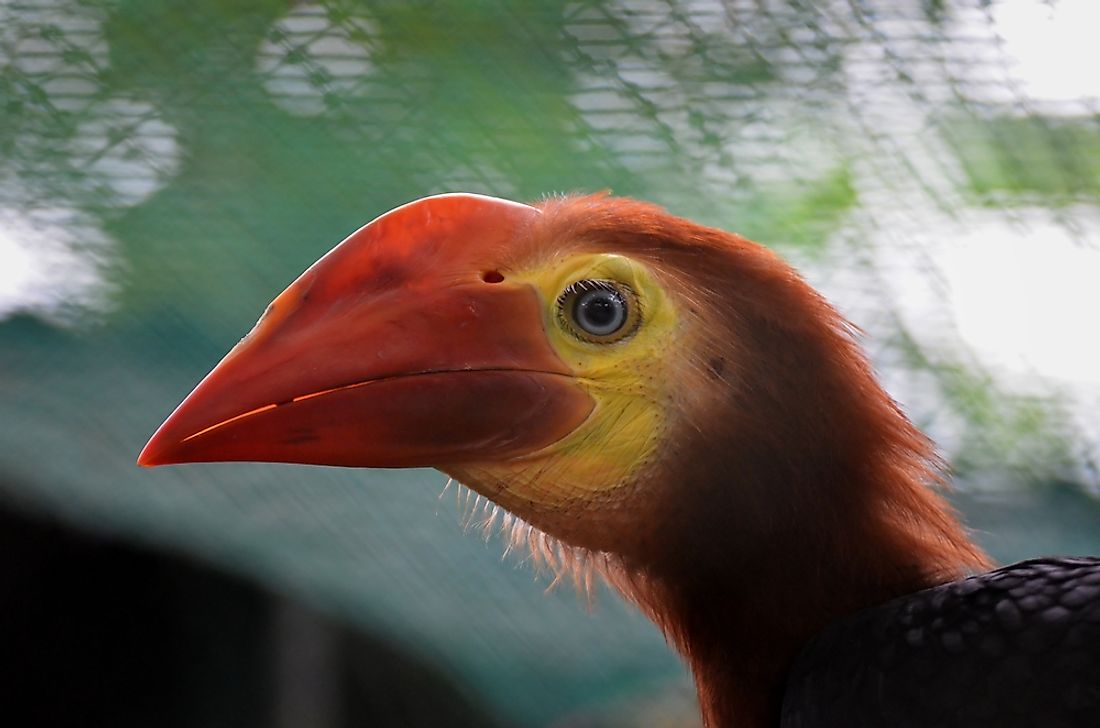
The Rhabdotorrhinus waldeni is a critically endangered hornbill species inhabiting the rainforests in Philippines’ Negros and Panay islands. Males of the species have a yellow throat and ocular skin while these parts are blue in females. They nest in hollows on tree trunks. Heavy logging in the rainforests inhabited by Walden’s hornbill and high hunting pressures threaten the survival of this species.
Cebu Flowerpecker
The Dicaeum quadricolor is a critically endangered bird endemic to the Cebu Island in the Philippines. It is small passerine blood that was rediscovered in 1992 after it was believed to have gone extinct. However, the current population is estimated to be still quite low in the range of 85 to 105. The Cebu flowerpecker males have a large triangular vermillion to scarlet colored patch on their coat. Females of the species lack this patch.
Philippine Eagle-owl
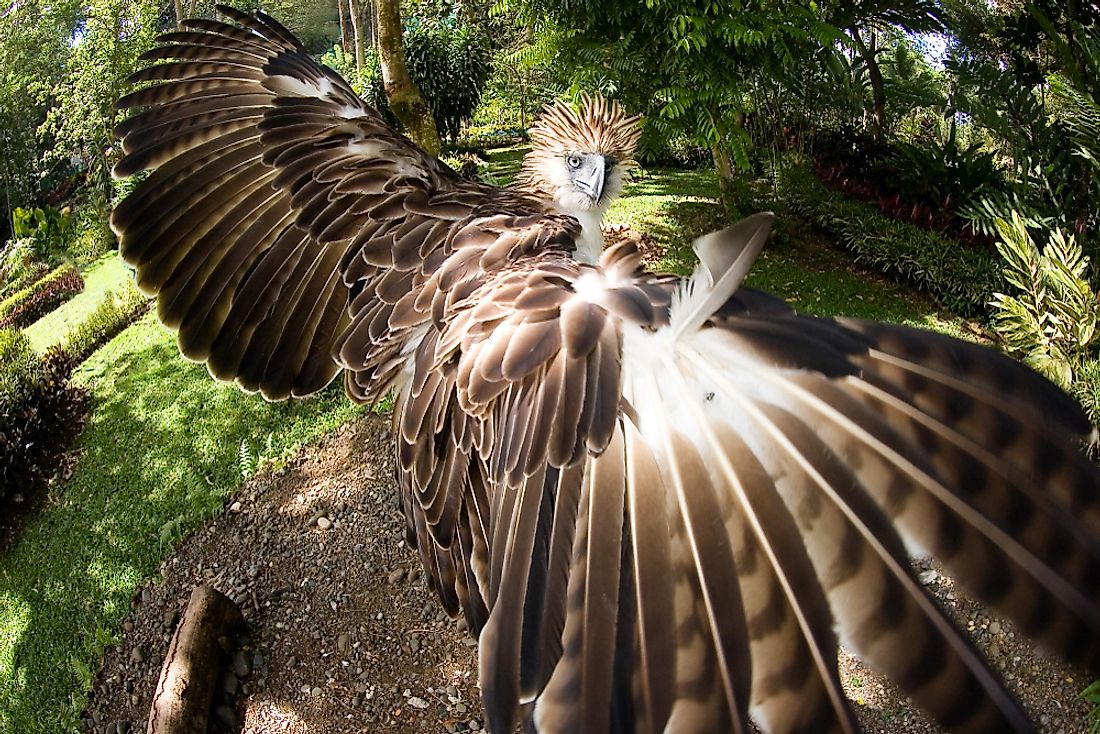
The Bubo philippensis is an owl species that is endemic to the Philippines. Here, it is found in the lowland forests on islands like Mindanao, Luzon, Samar, Bohol, and a few others. These birds are around 40 to 50 cm long and have a wing-span of 35 cm. Although it is the largest owl in the country, it is among the smallest of owls. These birds have a rufous color but with a lighter colored underside and yellow eyes. They are nocturnal creatures that hunt for prey at night. IUCN has labeled the species as Vulnerable as it is threatened by habitat destruction in its native habitat.
Red-vented Cockatoo

The Cacatua haematuropygia is a cockatoo species that is endemic to the Philippines. It has all-white plumage and pale yellow underwings. It is easily distinguished by red feathers around the vent. This bird is around 30 cm long and has a 22 cm long wingspan. These birds are social in nature and feeds, flies, and roosts in large noisy groups. Seeds, fruits, buds, nectar, etc., constitute the food of these birds. Unfortunately, illegal trapping of the bird for cage-bird trade has led to a dramatic decline in the population of the red-vented cockatoo. It is now a critically endangered species with a population estimated to be less than 1000.
Indigo-banded Kingfisher
Ceyx cyanopectus is a kingfisher species of the Alcedinidae family that is found only in the Philippines. It lives in the tropical dry and tropical and subtropical mangrove forests in central and northern islands of the country. The bright blue colored bird feeds on aquatic insects and fish. It perches on rocks near water or branches and foliage near water bodies from where it spots its prey.
Mindanao Bleeding-heart
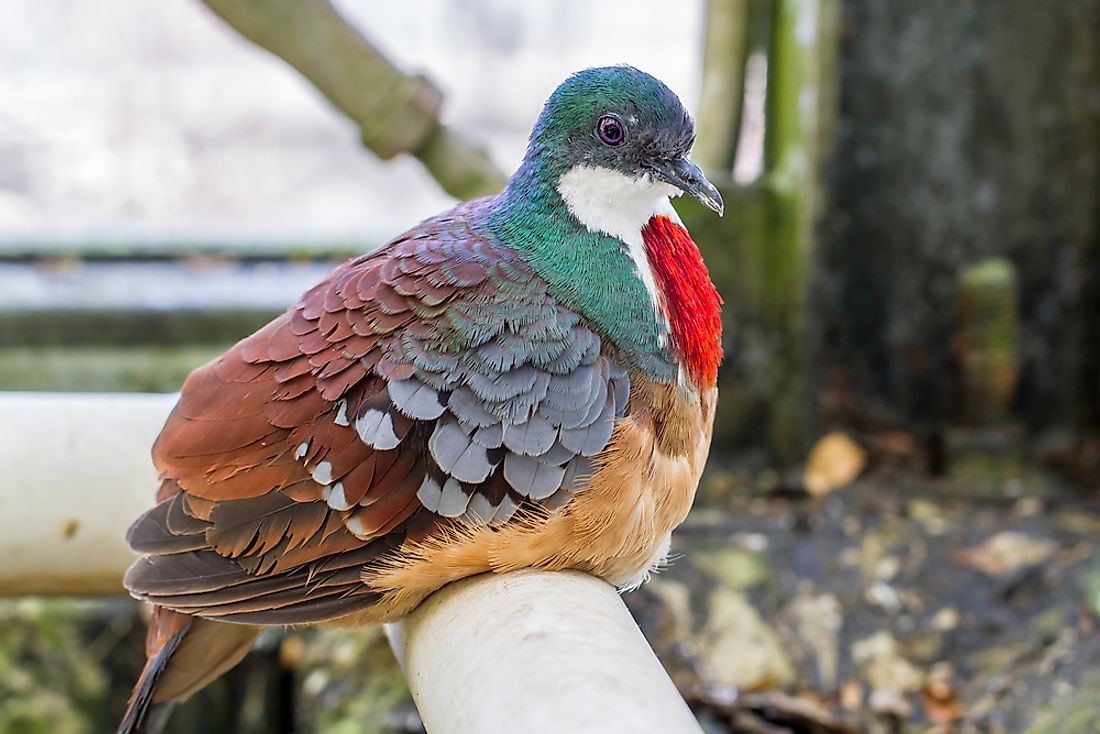
The Gallicolumba crinigera is a bird in the pigeon family that is named after a red blotch on its breast. It is about 29 cm long and weighs around 184 to 204 g. It is a shy bird that likes to spend most of its time on the floor of the forest and fly only occasionally for short distances. Sees, worms, insects, etc., are eaten by this bird. Deforestation, hunting for food, and capture for the pet trade are the biggest threats to the survival of the species. The bird is thus labeled as Vulnerable by the IUCN.
Beautiful Birds That Are Endemic To The Philippines
| Rank | |
|---|---|
| 1 | Palawan peacock-pheasant |
| 2 | Philippine mallard |
| 3 | Philippine falconet |
| 4 | Philippine megapode |
| 5 | Philippine duck |
| 6 | Philippine green pigeon |
| 7 | Pink-necked green pigeon |
| 8 | Pink-bellied imperial pigeon |
| 9 | Philippine turtle dove |
| 10 | Philippine cockatoo |
| 11 | Philippine koel |
| 12 | Philippine serpent eagle |
| 13 | Philippine eagle |
| 14 | Philippine hawk-eagle |
| 15 | Philippine eagle-owl |
| 16 | Spotted buttonquail |
| 17 | Luzon buttonquail |
| 18 | Calayan rail |
| 19 | Luzon rail |
| 20 | Plain bush-hen |
| 21 | Lowland white-eye |
| 22 | Indigo-banded kingfisher |
| 23 | Bukidnon woodcock |
| 24 | Southern silvery kingfisher |
| 25 | Northern silvery kingfisher |
| 26 | Red-keeled flowerpecker |
| 27 | Luzon bleeding-heart |
| 28 | Mindanao bleeding-heart |
| 29 | Mindoro bleeding-heart |
| 30 | Negros bleeding-heart |
| 31 | Sulu bleeding-heart |
| 32 | White-eared brown dove |
| 33 | Amethyst brown dove |
| 34 | Tawitawi brown dove |
| 35 | Yellow-breasted fruit-dove |
| 36 | Flame-breasted fruit-dove |
| 37 | Cream-bellied fruit-dove |
| 38 | Negros fruit-dove |
| 39 | Mindoro imperial pigeon |
| 40 | Spotted imperial pigeon |
| 41 | Cebu flowerpecker |
| 42 | Palawan hornbill |
| 43 | Mindoro hornbill |
| 44 | Philippine hornbill |
| 45 | Visayan wrinkled hornbill |
| 46 | Sulu hornbill |
| 47 | Sulphur-billed nuthatch |
| 48 | Philippine Trogon |







